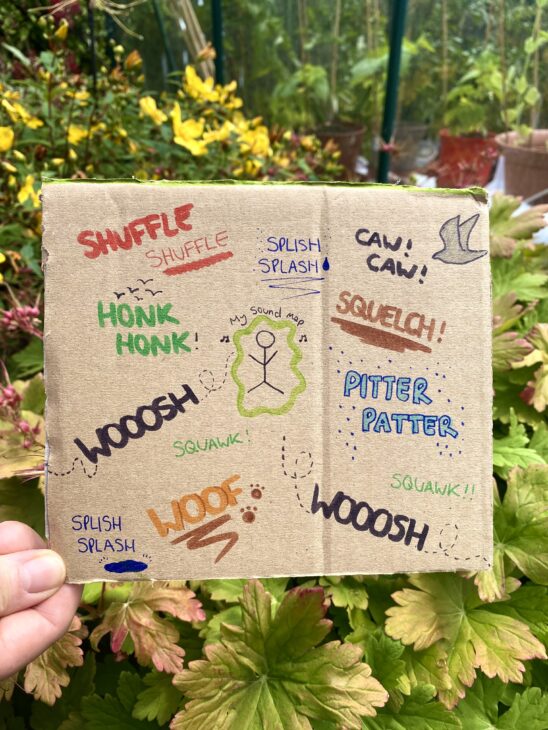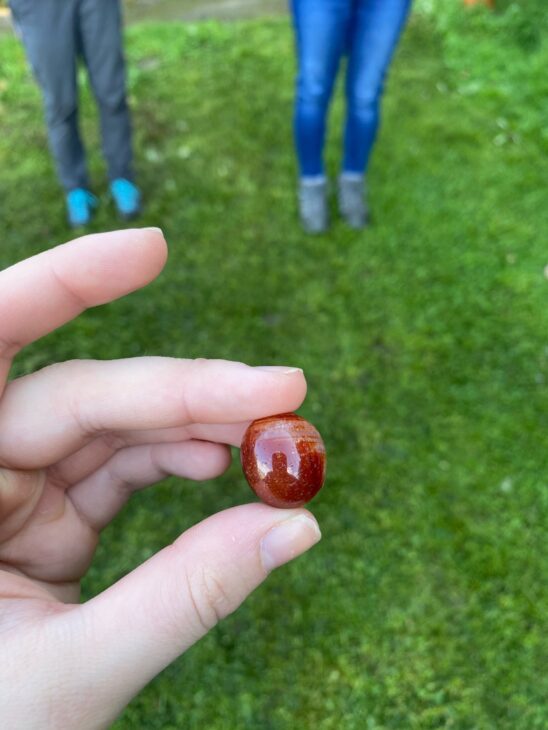Sound maps are a great way of encouraging people to stop and tune in with the place they are in. They confront a bad habit that most of us have developed – we are so intent on getting somewhere that we miss much of what we are travelling through. Or a place is so familiar we fail to notice the detail that makes it special.
Yet outdoors, whether by the coast or in the woods, it is the moments of pause that can offer up the richest opportunities to absorb the places we are in.
Sound maps are super easy to make, just like this one!

Can your child or group struggle to sit and listen? That’s ok! You could try this little trick. Use any object you have available that they can hold – we often use gemstones like this one here. This is a ‘listening stone’. When you hold it tight it helps you listen closely…

What you will need:
- Plain piece of paper or cardboard
- Pens and/or pencils
- Scissors
How to make your sound map:
- Cut out a piece of plain cardboard – this will be your map. This could be the inside of a cereal box, or just a piece of white card. It can be any shape you want!
- Find a quiet place to sit – this could be any outdoor space (garden, park, beach, woodland), in a room with the windows open, or if you can’t go outside – why not play a video of wildlife noises online.
- Choose a set amount of time – 2, 5 or 10 minutes is plenty.
- Now the hard part – to sit and listen! Each person should draw themselves in the middle of their cardboard sound map. As they listen, encourage them to draw, write, or colour the sounds they hear and where they are coming from. Are there birds singing beside you? Are there waves crashing in front of you? Are there leaves rustling above you?
- Once the time has finished, you can give the group a little extra time to add more detail and drawings to their map. Encourage some discussion – did everyone hear similar things? Anything unexpected? How much was humanmade noise vs natural noise?
Share your sound maps with us by using #DiscoverLearnPlay
